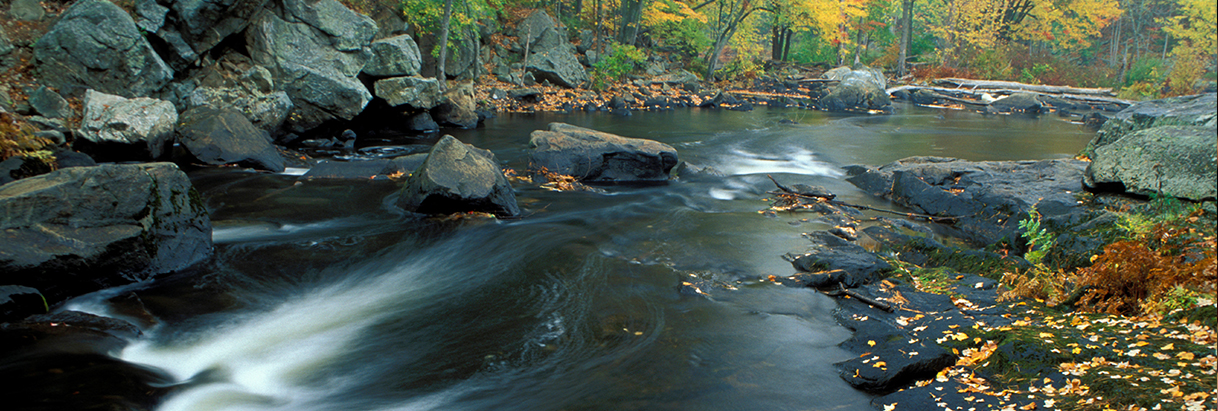Water Quality
What is meant by water quality?
Water quality can be defined as how clean or how safe water is for people and wildlife. Landowners along the Lamprey who responded to the LRAC's landowners' survey identified water quality as the single most important attribute to protect on the river. Because of its clean water, the river supports a healthy diversity of aquatic life, provides public drinking water (after treatment), and is safe for swimming, fishing, boating, and other water-based recreation.
The Lamprey is classified by the NH Legislature as a Class B (swimmable, fishable) river, and the state is thus required to maintain "fishable and swimmable" conditions as defined under the federal Clean Water Act. Water quality in the Lamprey River is generally very good. During the warm days of summer, however, the river’s current can be slow-moving with lower flows. In addition, it has several areas that are pond-like. These factors make the river vulnerable to pollution.
How do we know what the quality of water is?
The Lamprey River is fortunate to have many people studying its water quality. The University of New Hampshire has a few continuous monitoring stations to collect data on multiple hydrologic, chemical, and biological factors that can affect water quality. The Lamprey River Watershed Association has a dedicated team of volunteers who perform routine water quality sampling in the summer. These volunteers are trained by the NH Department of Environmental Services (NHDES ) to perform scientifically valid testing protocols. The results are sent to the Volunteer Rivers Assessment Program at the NHDES.
The volunteers test for the following:
- dissolved oxygen (necessary for fish and other aquatic animals to “breathe”)
- pH (a measure of acidity)
- E. coli bacteria (associated with fecal material and an indicator of possible health risks)
- conductivity (an indirect measure of dissolved salts)
- turbidity (how clear or how cloudy the water is)
- temperature (an important factor for determining maximum possible dissolved oxygen and important to many fish species, for example, warm water can indicate runoff from parking lots and roads)
- chlorophyll a (measures how many tiny, planktonic algae are present)
- total phosphorus (a main ingredient in fertilizer that causes fresh water algae to over-produce)
- total Kjeldahl nitrogen (how much biologically usable nitrogen, or fertilizer, is available to algae)
- chloride (how much road salt is reaching the river)
To view the summary of Lamprey River dissolved oxygen, pH, and nitrate water quality test results for 1990-2013, please click here. A one page summary is provided as an introduction. To view a summary of specific conductance, E. coli, and turbidity, please click here. For the full report, please click here. To view a summary report of long-term phosphorus and heavy metals, click here.
NHDES also maintains a limited water quality monitoring program at sampling sites along the river and its tributaries. Samples are taken once every three years during the summer, providing a snapshot in time of the river's water quality. The state does not currently conduct continuous water quality monitoring. Additional studies are undertaken periodically. Examples include studies of particular sites or special projects, such as data for the State of the Estuaries Report or when a non-point source of pollution is being located. If you would like to find out more about local water quality testing and volunteering opportunities, visit the Lamprey River Watershed Association's website. The LRWA trains and organizes volunteers to run water quality tests on the Lamprey - no experience necessary!

